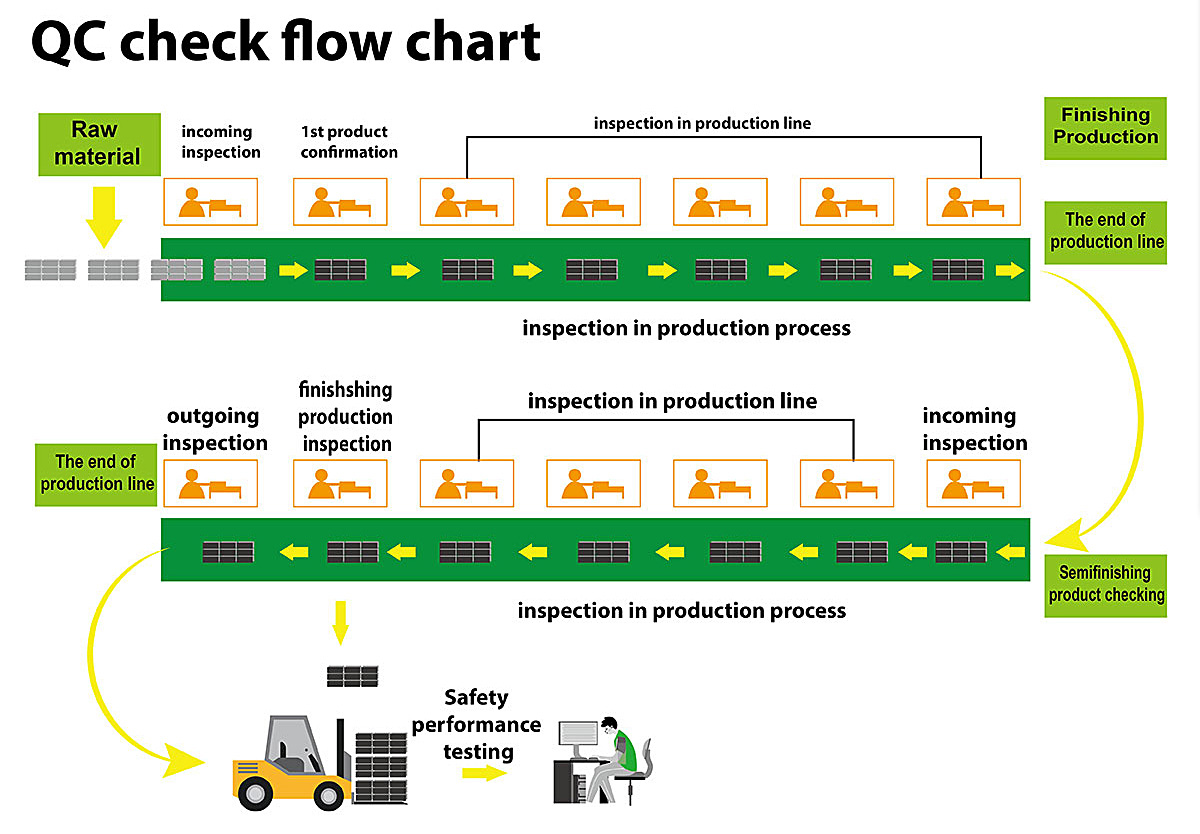Battery Quality Control
JB BATTERY has a very strict quality control system and environmental control system. We have passed ISO9001: 2008 certification and ISO14001: 2004 in the passed several years.

Quality Assurance
• Customer’s satisfaction is our pursuing goal.
• Customer-oriented is the principle of our services.
• Our core value and core competence is according to effective, convenient and cost-controlled customer services.
• JB BATTERY guarantees one year limited warranty against workmanship and materials defect.
• All the JB BATTERY products are insured by PICC PROPERTY AND CASUALTY COMPANY LIMITED.
We can offer the highest indemnity USD1,000,000.00 Quality Assurance during Design and Manufacturing Process:
1. According to ISO/TS16949 standards, establish and execute the quality assurance system of design and manufacturing process.
2. Apply the following quality management tools during design and manufacturing process:
— Advance production quality plan (APQP)
— Production part approval process (PPQP)
— Control Plan (CP)
— Failure Mode and Effects Analysis (FMEA)
— Measurement System Analysis (MSA)
— Statistical Process Control (SPC)
— Design of Experiment Analysis (DOEA)
— Total Productive Maintenance (TPM)
— Tolerance Analysis (TA)

Here are the most common battery test methods:
Voltage
Battery voltage reflects state-of-charge in an open circuit condition when rested. Voltage alone cannot estimate battery state-of-health (SoH).
Ohmic test
Measuring internal resistance identifies corrosion and mechanical defects when high. Although these anomalies indicate the end of battery life, they often do not correlate with low capacity. The ohmic test is also known as impedance test.
Full cycle
A full cycle consists of charge/discharge/charge to read the capacity of the chemical battery. This provides the most accurate readings and calibrates the smart battery to correct tracking errors, but the service is time consuming and causes stress.
Rapid-test
Common test methods include time domain by activating the battery with pulses to observe ion-flow in Li-ion, and frequency domain by scanning a battery with multiple frequencies. Advanced rapid-test technologies require complex software with battery-specific parameters and matrices serving as lookup tables.
BMS
Most Battery Management Systems estimate SoC by monitoring voltage, current and temperature. BMS for Li-ion also counts coulombs.
Coulomb counting
The Full Charge Capacity (FCC) of a smart battery provides coulomb count that relates to SoH. FCC readout is instant but the data gets inaccurate with use and the battery requires calibration with a full cycle.
Read-and-Charge
A charger featuring RAC technology reads battery SoC with a proprietary filtering algorithm and then counts the coulombs to fill the battery. RAC requires a onetime calibration for each battery model; cycling a good pack provides this parameter that is stored in the battery adapters. RAC technology is a Cadex development.
SOLI
The State-of-Life-Indicator estimates battery life by counting the total coulombs a battery can deliver in its life. A new battery starts at 100%; delivered coulombs decrease the number until the allotment is spent and a battery replacement is imminent. The full scale is set by calculating the coulomb count of 1 cycle based on the manufacturer’s specifications (V, Ah) and then by multiplying the number with the given cycle count. Developed by Cadex, SOLI can be used in wheelchairs, medical devices, traction and UPS, installed when new or added as retrofit. Wireless connectivity provides fleet management.

 English
English Português
Português 日本語
日本語 Español
Español Pусский
Pусский Deutsch
Deutsch 한국어
한국어 العربية
العربية Français
Français Tiếng Việt
Tiếng Việt Italiano
Italiano